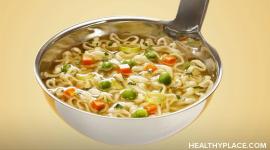ADHD Elimination Diet: Food Sensitivities in ADHD Children

An ADHD elimination diet may be an approach to helping your child manage the difficult symptoms of inattention and hyperactivity (Diets for ADHD Hyperactive Child and Inattentive Type). In general, an elimination diet is where a person removes one or more foods from his or her diet for a period of time. The purpose of eliminating foods is to help identify any food sensitivities. Certain foods, such as dairy, nuts, wheat, and food dyes are thought to have a negative impact on some people. In the same respect, those who experience inattention and/or hyperactivity may be more affected by those foods and thus benefit from a specifically tailored ADHD elimination diet.
ADHD Elimination Diet
The concept of an ADHD elimination diet is fairly simple to understand – begin by removing the foods most likely to affect your child’s behavior, and then monitor and observe any change in behavior. If your child appears more attentive when wheat is removed from his or her diet yet is increasingly unfocused when reintroduced, it is likely your child has a wheat sensitivity.
The research behind the benefits of using an elimination diet for ADHD symptom management is convincing. A 2011 study showed that the use of an elimination diet for ADHD children resulted in a 64% improvement in symptoms after five weeks, in comparison to children who ate a “normal” diet. There are numerous other studies demonstrating the potential benefits of using an ADHD elimination diet for symptom management. Yet, as with most research, there is, of course, opposing research. Nonetheless, if you are thinking about trying an ADHD elimination diet for your child, there are a few different ways to approach the elimination process.
Variations of the ADHD Elimination Diet
Food elimination diets for ADHD come in different forms.
- The single-food ADHD elimination diet – this variation of an elimination diet focuses on the removal of only one or two foods at a time.
- The multi-food ADHD elimination diet – this diet is focused on removing the foods that have been found to most commonly cause negative reactions (i.e. – wheat, corn, soy, nuts, eggs, dairy, and/or artificial additives.
- The few foods ADHD elimination diet – also referred to as the “oligoantigenic” diet. In terms of using an elimination diet and ADHD, this food regimen incorporates only a few foods, making it difficult to maintain over long periods of time. While most foods are eliminated in this diet, the foods least likely to cause issues can be consumed including meat, rice, and vegetables. If the oligoantigenic diet interests you, it may be beneficial to get the help of a medical professional to avoid nutritional deficiencies.
An ADHD elimination diet has the potential to be beneficial to your child’s inattention and hyperactivity. Yet, when changing the diet for ADHD, as with making any major dietary changes, it is helpful to consult the advice of a medical professional.
APA Reference
Jarrold, J.
(2021, December 20). ADHD Elimination Diet: Food Sensitivities in ADHD Children, HealthyPlace. Retrieved
on 2025, November 25 from https://www.healthyplace.com/adhd/food-and-adhd/adhd-elimination-diet-food-sensitivities-in-adhd-children



